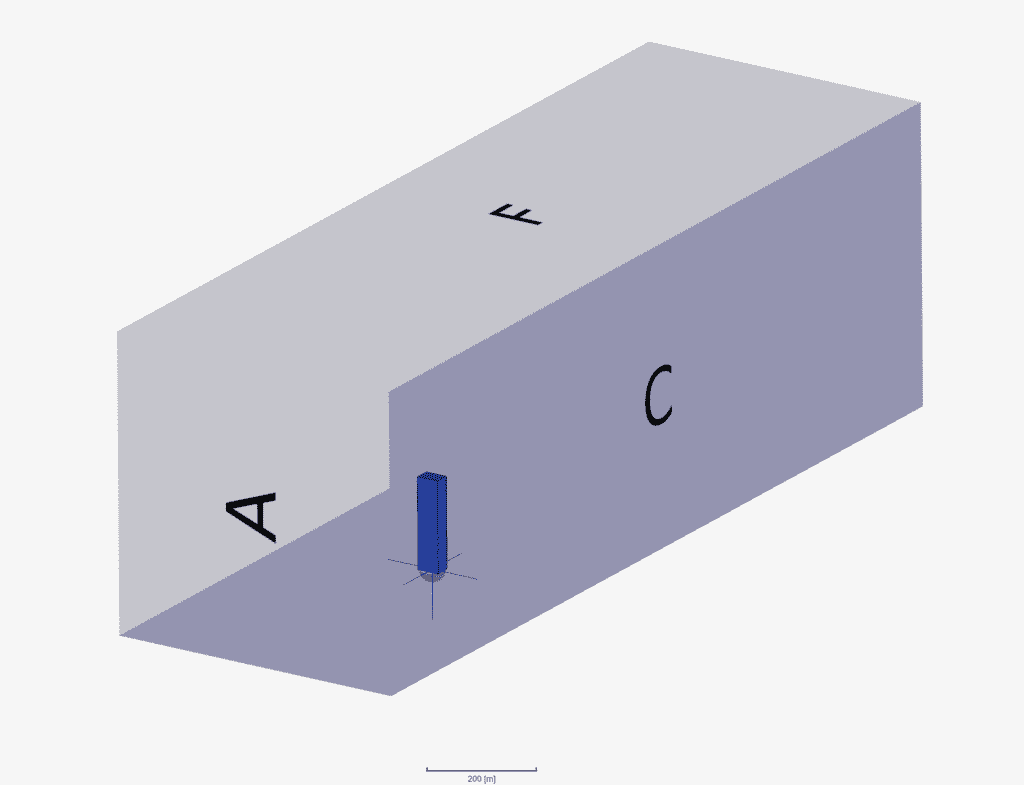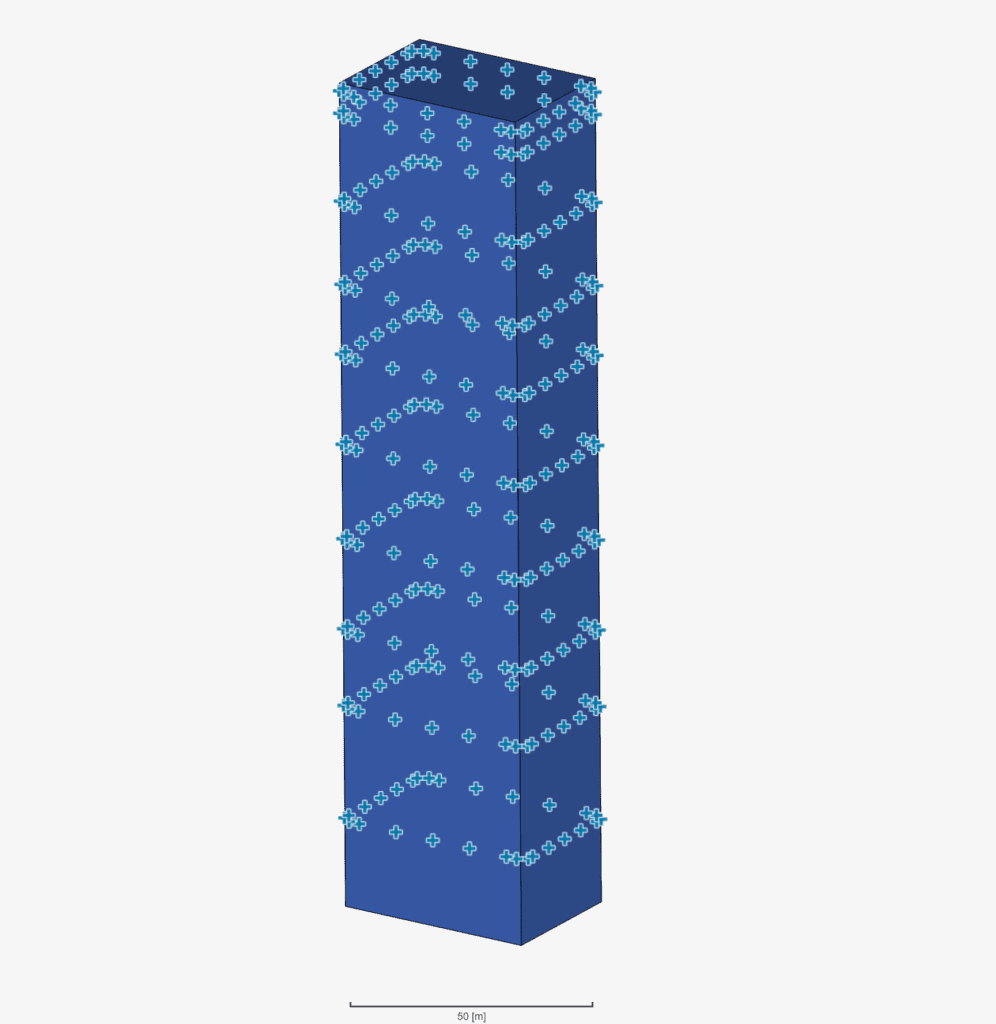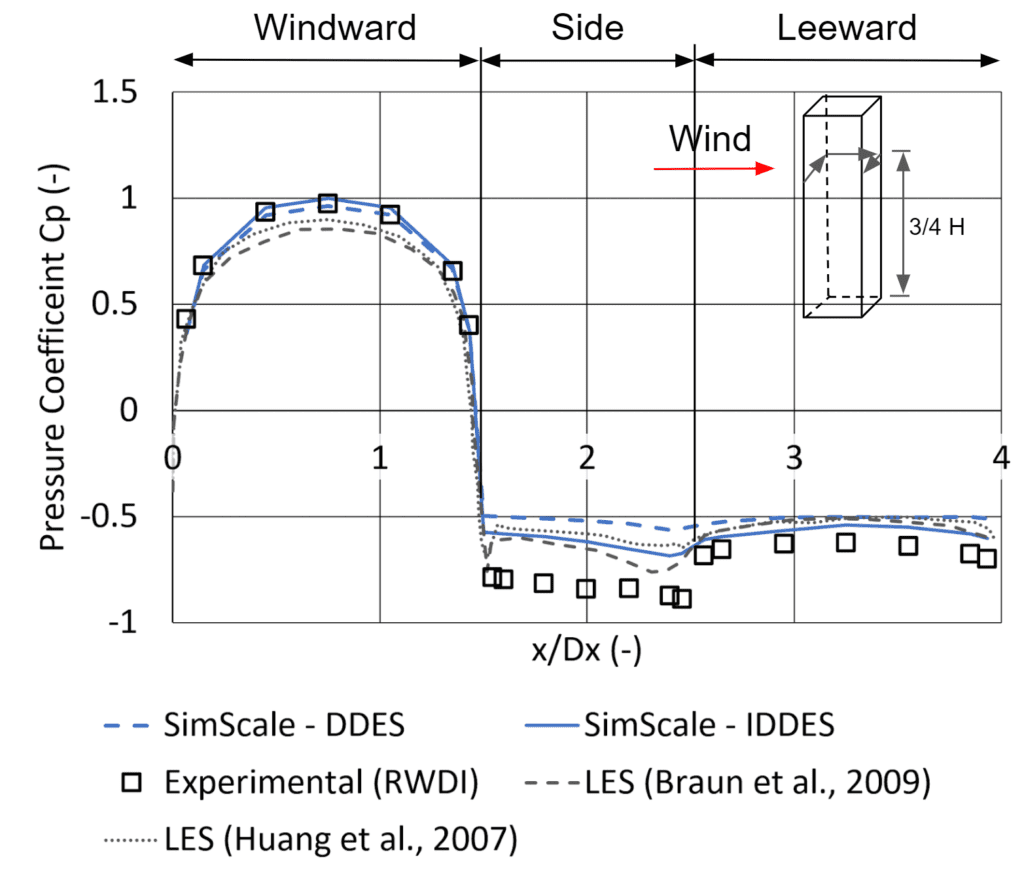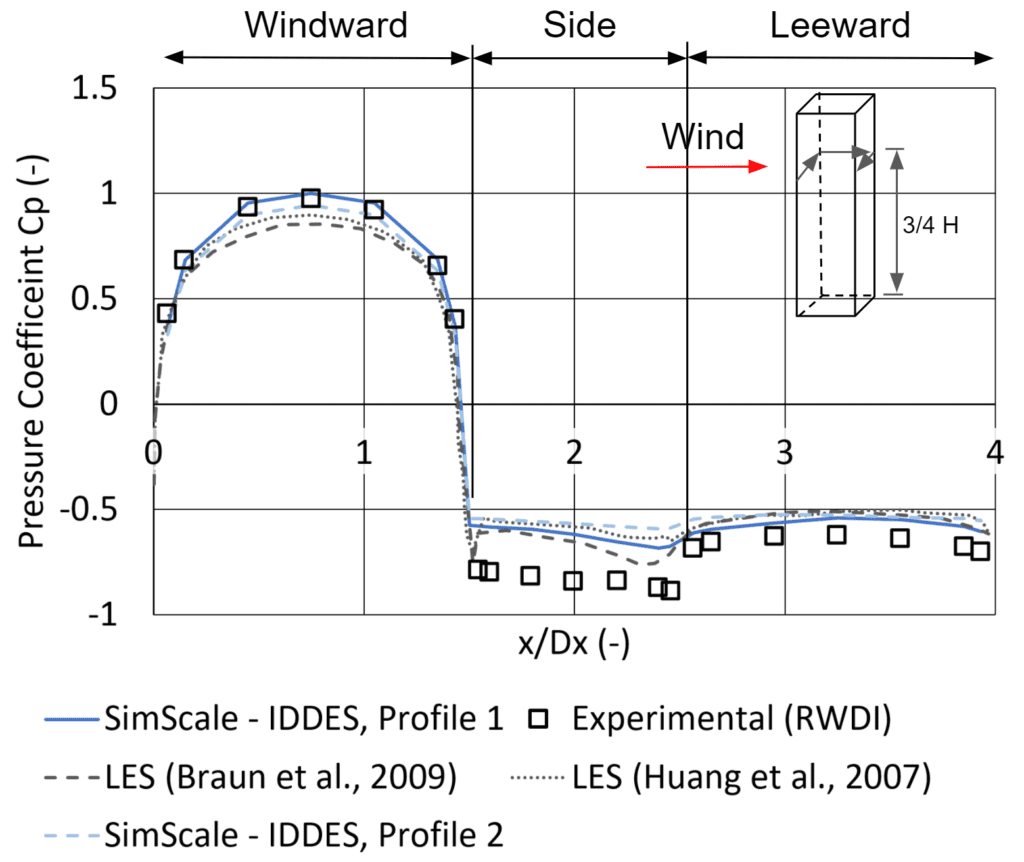Documentation
The CAARC validation study has for many years been used to validate computational fluid dynamics (CFD) codes. This case has been shown in the past validating both URANS and LES turbulence models, where the trend has been that RANS/URANS has predicted the windward facade well, yet fails to predict the sides and leeward facades. In contrast, LES has shown a good agreement with experimental results, however, there is still in general, an over-prediction for the sides and leeward facade, and a worse prediction on the windward facade.
In this project, we look at SimScale’s lattice Boltzmann method (LBM) implementation, Pacefish® from Numeric Systems GmbH
The LBM results using ‘Profile 1’ and the IDDES turbulence model predicted much better than past LES solutions for the windward and leeward facades and came in around as the middle ground for the side facades, where it performed better than LES results obtained in [1] but slightly higher than obtained in [2]. Correlations between Experimental and LBM results show that a strong linear correlation is shown for all 3 sides. The error for the rear was slightly positive, and the error for the side was even more positive, meaning that values followed good trends but were higher than experimental values as expected from past CFD studies.
Key points about the simulation setup include:


The purpose of our CAARC validation study is to prove that mean facade pressures are validated against experimental data. The results used to compare were obtained as follows.

We can see that both turbulence models compare well for the windward facade, however as expected, in comparison to a full LES model, the DDES does not perform as well for the side facade and the leeward facade. This is likely because of the increased amount of wall modeling that is done in comparison to LES or IDDES. The IDDES model, however, holds up very well, outperforming LES for the leeward and windward facades, and coming around as the middle ground for the side facade.

To ensure a thorough investigation, a different inlet profile was compared to see how sensitive results were to the inlet. The results didn’t vary as much as expected, however, with the second inlet profile, results were less comparable to experimental. The model still performed better for the windward facade, however, performed comparatively to LES results labeled ‘LES (Haung et al., 2007)’ for both the side facade and the leeward facade.

Looking at correlations, it makes it clear how the results compare to experimental, where if all points were located on the ideal line, a perfect result would be obtained. This shows in a different but clearer way how our result for the windward facade is almost a perfect match. The leeward facade shows a good linear correlation, however, its error is positive slightly. The side facade is similar however with a higher positive error.
In addition to pressure coefficient values, we can look at additional results, for example, the velocity fields around the building.

The comparison of flow pattern shows very comparable results to [5], this can be seen particularly in wake distance from the building and main swirl locations at the top of the building at x/D = 1.25 and at the ground at x/D = 2. A larger image can be seen below to make the results clearer.
Comparison to LES is not better than a comparison to wind tunnel results, however, it is good to get a sanity check against peer-reviewed results for highly accurate models such as LES.
Results obtained from SimScale’s lattice Boltzmann method (LBM) implementation from Numeric Systems
Both DDES and IDDES were compared for the same grid, and it was found that the resolution in combination with the IDDES turbulence model had an advantage over DDES as it models less of the boundary layer, but still provides wall modeling.
Two different ABL inlet profiles from different papers where LES results were obtained were compared to test the sensitivity. It was found that an exponent of 0.17 better matched experimental results compared to those obtained with an exponent of 0.16, however, both agreed well overall.
Using correlations (Figure 5), we can highlight the trends shown in Figure 3 and Figure 4 where windward facades showed a strong linear correlation with little error, meaning that an almost perfect corroboration was present. The leeward facade had a good linear correlation with a slightly positive error, highlighting a good trend, but pressures that were slightly higher than experimental values. The side facade also had a good linear correlation, but a visible positive error, meaning this was the facade that was least well predicted, however, remember it was just as good or better than similar past LES results.
References
Last updated: October 19th, 2021
We appreciate and value your feedback.
Sign up for SimScale
and start simulating now